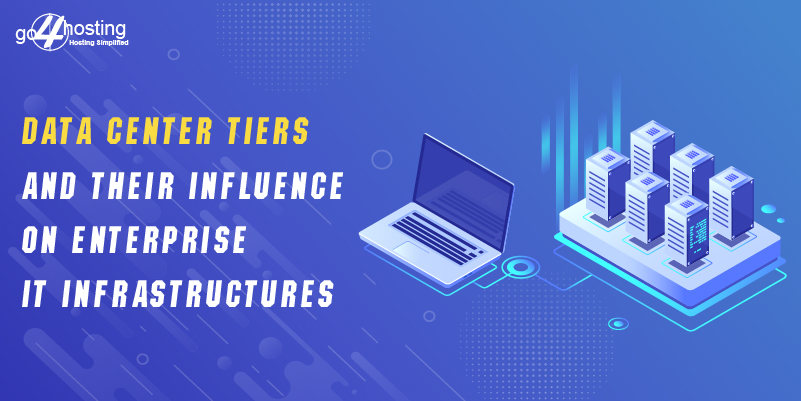Data Center Tiers and their Influence on Enterprise IT Infrastructures

It pays to understand the value of data center tiers in the context of enterprise IT infrastructure. Knowledge about data center tiers can enhance the overall understanding of what to expect from a data center resource.
Overview of DC Tiers
A data center tier is simply a nomenclature used to rank different data centers by categorizing their uptime performance. There are four tiers of data centers as established by Uptime Institute so that IT professionals are able to know the standards of availability and uptime.
Tier I Data Center– Tier I Data Center provides the fundamental and essential support to your IT infrastructure by shifting the same from your in-house facility to a dedicated building called as a data center.
The attributes of data centers belonging to the Tier I category are basic yet far more superior to the in-house IT facilities of majority of enterprises. Your IT infrastructure including servers can be positioned in specially assigned racks inside a dedicated building of data center. It is supplied with seamless power with UPS backup facilities for enhanced availability and uptime.
Climate controlled environment is provided to maintain server and other networking equipment in good running condition. The cooling equipment is also backed by incessant power supply. The overall arrangement in the Tier I data center is aimed at greater efficiency and performance of websites with enhanced availability in spite of traffic spikes or unexpected surge in resource requirements. In the event of unexpected power failure, the data centers in Tier I category are equipped with power generators for assured availability of electrical supply to keep your website up and running.
Redundancy in Tier II Data Centers
In addition to the facilities of Tier I data centers, a Tier II data center offers extra redundancy in terms of cooling and power resources. Although these systems are not absolutely redundant, these can certainly surpass the provisions of Tier I data centers. There is a greater assurance of uninterrupted cooling and power arrangements in Tier II Data Centers.
Tier III DC- Concurrent maintenance and superior connectivity
Needless to mention, a Tier III Data Center is equipped to provide all features of Tier I as well as Tier II Data Centers. It is designed to facilitate concurrent maintenance of equipment without causing any disruptions as far as the availability and connectivity is concerned.
There is a dual power availability to keep all IT components running without any hassles and the vital systems such as networking and cooling are supplied with dual UPS systems to facilitate maintenance of one of the UPS units. However, since the Tier III Data Centers lack independent feeds of power and cooling systems from external sources, these are not entirely fault tolerant.
Fault tolerant Tier IV Data Centers
Combine all the attributes of Tier I to Tier III data centers and add 2N fault tolerance capacity to get a Tier IV Data Center for your mission critical web ventures. The 2N Fault Tolerance implies that each and every IT component receives dual power and cooling supplies. Independent cooling and data paths ensure that the IT processing cannot be affected even if any component of cooling or power supply fails to perform.
Significance of uptime values in DC Tiers
Although, all Data Centers belonging to different tiers assure above 99 percent uptime annually, there can be considerable variance in terms of total annual downtime as you move up from Tier I to Tier IV data centers.
This is mainly due to the surplus redundancy provided by top Tiered data centers. This means a Tier I data center can experience a total annual downtime in excess of 29 hours while a Tier IV data center can be guaranteed to perform for 99.995 percent of the time.
There is a strong association between the nature of your business and selection of a data center based on different Tier categories. So a smaller enterprise can be content with a Tier I data center while large and complex ecommerce or government websites should be provided with facilities of Tier IV Data Centers.
If you are only a beginner and have limited resources to spare for procurement of a Data Center resource, then you need not go for top tiered data centers. In contrast, if your website is expected to drive business critical applications that need to be incessantly available, then you must choose either a Tier III or a Tier IV data center environment.
For large enterprises, the option of developing an onsite infrastructure of a Tier IV data center may sound attractive. However, there are a large number of financial, geographical, and technical factors to be considered before choosing between an outsourced and in-house data center. The Data Center standards set by Uptime Institute help enterprise clients make the right choice by assessing their website requirements.





